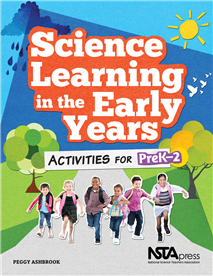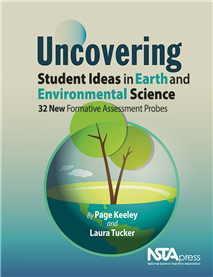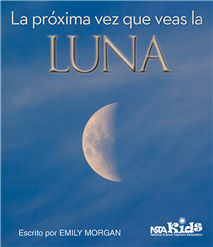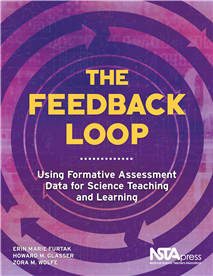All Book Chapters
Book Chapter
In this chapter, the objective of the activity “Schoolyard as Model” is to become familiar with the purpose of maps as tools to serve as models of a larger area. Chapters 1 and 2 are also included in this book selection. Chapter 1 focuses on scie...
Book Chapter
Reading Stories and Making Predictions
In this chapter, the objective of the activity “What Might Happen If ...?” is to have students think about a story and make predictions about what might happen next. Chapters 1 and 2 are also included in this book selection. Chapter 1 focuses on ...
Book Chapter
In this chapter, the objective of the activity “Crater Making” is to explore the formation of impact craters. Chapters 1 and 2 are also included in this book selection. Chapter 1 focuses on science inquiry and the use of “The Early Years” col...
Book Chapter
In this chapter, the objective of the activity “Teach and Tell” is to develop a routine for class discussion about science topics that will support children in contributing to the group, listening to each other, interacting cooperatively, learnin...
Book Chapter
In this chapter, the objective of the activity “Just Draw It—Ramps” is to develop children’s ability to describe what they know through drawing. Chapters 1 and 2 are also included in this book selection. Chapter 1 focuses on science inquiry a...
Book Chapter
In this chapter, the objective of the activity “Materials Museum” is to experience and describe a wide range of materials and discuss their attributes and uses. Chapters 1 and 2 are also included in this book selection. Chapter 1 focuses on scien...
Book Chapter
In this chapter, the objective of the activity “Observing Weather” is to participate in an ongoing data collection of local weather conditions. Chapters 1 and 2 are also included in this book selection. Chapter 1 focuses on science inquiry and th...
Book Chapter
In this chapter, the objective of the activity “A Plant’s Life” is to observe and document the life cycle of an organism. Chapters 1 and 2 are also included in this book selection. Chapter 1 focuses on science inquiry and the use of “The Earl...
Book Chapter
In this chapter, the objective of the activity “Sand Movers” is to explore how water can move sand and to use evidence to back up children’s scientific claims. Chapters 1 and 2 are also included in this book selection. Chapter 1 focuses on scie...
Book Chapter
In this chapter, the objective of the activity “Heavy Lifting” is to investigate how to carry and transport a heavy object, including designing and using a tool. Chapters 1 and 2 are also included in this book selection. Chapter 1 focuses on scie...
Book Chapter
In this chapter, the objective of the activity “Materials Have Properties” is to experience the properties of a wide variety of materials and to use understanding of the properties of materials to make a container that successfully contains a foo...
Book Chapter
In this chapter, the objective of the activity “Ice Cream Science” is to make observations of the ingredients for ice cream before mixing them together and after making a change by cooling the ingredients. Chapters 1 and 2 are also included in th...
Book Chapter
In this chapter, the objective of the activity “Making Lemonade From Scratch” is to engage children in observing the process of a solid dissolving into a liquid as they mix the two together. Chapters 1 and 2 are also included in this book selecti...
Book Chapter
The Nature of Science in Early Childhood
In this chapter, the objective of the activity “Observations and Inferences” is to introduce the concept of creating inferences based on observations. Chapters 1 and 2 are also included in this book selection. Chapter 1 focuses on science inquiry...
Book Chapter
Available in April!If you’re new to formative assessment probes, you’ll love the latest book in the bestselling Uncovering Student Ideas in Science series. Authors Page Keeley and Laura Tucker give you 32 engaging questions, or probes, that can r...
Book Chapter
La próxima vez que veas la luna (Sample chapter)
2015 Children's Choices Winner, Children's Book Council and International Literacy Association!2015 REVERE Award Finalist, PreK-12 Learning Group, Association of American Publishers!...
Book Chapter
This chapter introduces and provides an overview of the Feedback Loop. It explains its structure and usefulness in guiding teachers to consider a number of components when setting goals, developing tools to collect data, and analyzing those data to d...
Book Chapter
This chapter highlights how we think about goals in the Feedback Loop. It discusses the element’s value, explaining what it is and how teachers can use it to grow in their practice and better support student learning. District and state standards ...
Book Chapter
Designing, Selecting, and Adapting Tools
This chapter walks you through processes for selecting, adapting, and designing tools to use in the Feedback Loop. It provides ideas for tools teachers can use to explore selected science practices in classrooms. The tools mentioned include ways to ...
Book Chapter
This final step of the Feedback Loop is where everything comes together. The chapter starts by talking about what we mean by inferences and then walks through a few guides for making those inferences. Also included are some vignettes of teachers maki...
Book Chapter
This chapter explores how to close the loop by connecting inferences and goals through feedback. It presents the process of connecting inferences about student learning back to original goals in the Feedback Loop, a process called identifying the gap...
Book Chapter
Using the Feedback Loop to Plan and Inform Instruction
This chapter uses the full Feedback Loop to describe an approach for planning and informing instruction. It is designed to combine all the information in the previous chapters into a series of resources that will help you learn to use all the element...
Book Chapter
This chapter discusses how to collaborate with colleagues when considering data and the Feedback Loop to further increase the effect this work can have. We discuss the value and importance of working with other educators and identify ways to go abou...
Book Chapter
The purpose of this assessment probe is to elicit students’ ideas about the structure of the solid Earth. The probe is designed to find out if students recognize that Earth’s outer layer (crust) is mostly solid rock with a thin layer of soil on t...
Book Chapter
The purpose of this assessment probe is to elicit students’ ideas about soil. Soil is the material that is useful to plants and animals, including people. Its formation is a slow process but continuous and still happening today. This probe is desig...
Book Chapter
The purpose of this assessment probe is to elicit students’ ideas about the surface of Earth. It is designed to find out if students recognize that most of Earth’s surface is covered by water and helps students learn about the ratio of water to l...
Book Chapter
Where is Most of the Fresh Water?
The purpose of this assessment probe is to elicit students’ ideas about the distribution of fresh water. The probe is designed to find out if students recognize that most of Earth’s fresh water is found in frozen form or groundwater. It is best u...
Book Chapter
The purpose of this assessment probe is to elicit students’ ideas about a major freshwater resource, groundwater. The probe is designed to find out how students visualize groundwater, which can be challenging as it is very different from water reso...
Book Chapter
The purpose of this assessment probe is to elicit students’ ideas about the ocean and seas. The probe is designed to reveal whether students use geographic names and locations to consider the number of separate oceans and seas or use the concept of...
Book Chapter
The purpose of this assessment probe is to elicit students’ ideas about the ocean’s salinity. This probe is best used with grades 5–12, and is designed to uncover students’ ideas about the role of landforms and rivers in carrying salt into th...
Book Chapter
The purpose of this assessment probe is to elicit students’ ideas about the water cycle. The probe is designed to find out what students think a representation of the water cycle should include to show evaporation and transpiration. This probe is b...
Book Chapter
Where Did the Water in the Puddle Go?
The purpose of this assessment probe is to elicit students’ ideas about evaporation. The probe is designed to find out if students recognize that water goes into the air around us in the form of water vapor. It is best used with grades 3–8, and c...
Book Chapter
The purpose of this assessment probe is to elicit students’ ideas about weather predictions. The probe is designed to find out if students recognize the limitations of long-term weather forecasting and to help students understand the difference bet...
Book Chapter
In Which Direction Will the Water Swirl?
The purpose of this assessment probe is to elicit students’ ideas about the Coriolis effect, which describes how rotating objects are deflected and helps explain the movement of large fluid masses. The probe is designed to find out whether students...
Book Chapter
Does the Ocean Influence Our Weather or Climate?
The purpose of this assessment probe is to elicit students’ ideas about the connection between the oceans and weather and climate. The probe is designed to reveal how students think the ocean influences atmospheric conditions. Of all the influences...
Book Chapter
The purpose of this assessment probe is to elicit students’ ideas about weather versus climate. The probe is designed to find out if students distinguish between a one-time weather-related change and a change in climate. Weather and climate are rel...
Book Chapter
Are They Talking About Climate or Weather?
The purpose of this assessment probe is to elicit students’ ideas about climate. The probe is designed to find out whether students distinguish between weather and climate. It is important that students understand that they are to select statements...
Book Chapter
What Are the Signs of Global Warming?
The purpose of this assessment probe is to elicit students’ ideas about signs of global warming. The probe is designed to determine whether students think a statement is accurate or complete enough to see direct patterns or draw inferences from dat...
Book Chapter
The purpose of this assessment probe is to elicit students’ ideas about Earth’s history. The probe is designed to reveal how old students think Earth is. It is important that students include in their explanation the type of evidence they think s...
Book Chapter
Fossils provide evidence about the types of organisms that lived long ago and also about the nature of their environments. The purpose of this assessment probe is to elicit students’ ideas about fossils. The probe is designed to find out if stude...






